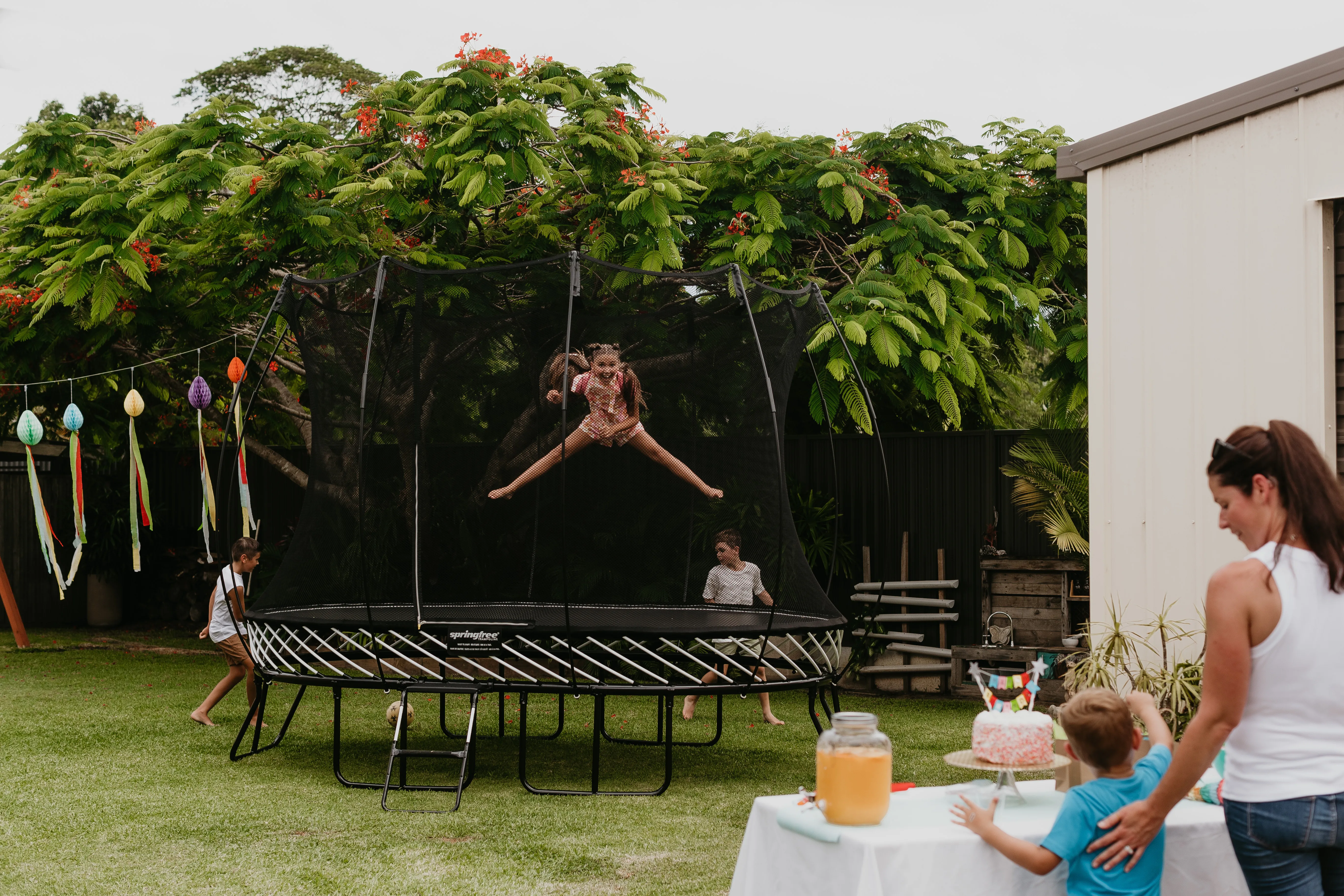You’ve probably heard this oft-recited statement before: “Trampolines are too dangerous!”
Here’s the truth within that statement: Yes, trampolines can be dangerous IF you don’t use them properly.
That “IF” is the key, because if you use a trampoline the right way, it can provide you and your family with joyful moments and everlasting memories without compromising your safety.
But sadly, many people either don’t follow or don’t know about the basic trampoline safety rules that could prevent a lot of the trampoline injuries that occur.
To help you and your loved ones avoid a trampoline accident, we are going to use our standing as the inventors of the safest trampoline (Springfree Trampoline) to provide you with 10 ground rules that, if followed, will significantly decrease your chances of experiencing a trampoline injury.
Trampoline Injury Statistics
Before getting to the safety rules, we want to provide you with some data about trampoline injuries, so you’re fully informed on the subject.
As the data demonstrates, trampolines can be dangerous if not used correctly. Around 100,000 go to the emergency room every year for a trampoline injury, according to Policygenius.
Of the trampoline injuries that happen each year, most of them are sustained by children, with the vast majority occurring by children between the ages of 5 and 14, according to OrthoInfo.
Trampolines are undoubtedly safer than they were a couple of decades ago, with most trampolines nowadays having enclosure nets and safety padding over the springs.
But trampolines, particularly ones that use cheaper materials, still pose safety hazards that need to be considered before purchasing one.
There are multiple ways to get injured on a trampoline, but the most common ones are:
- Multiple people colliding while jumping on the trampoline at the same time.
- Falling on the trampoline mat, frame or springs without adequate padding.
- Performing flips or other tricks and landing awkwardly.
- Falling off or through the trampoline and to the ground.
These statistics may alarm you a bit about the safety of trampolines. Rest assured, in the next section, we’re going to give you 10 rules to follow so you can rest assured that you are lowering your chances of a trampoline injury.
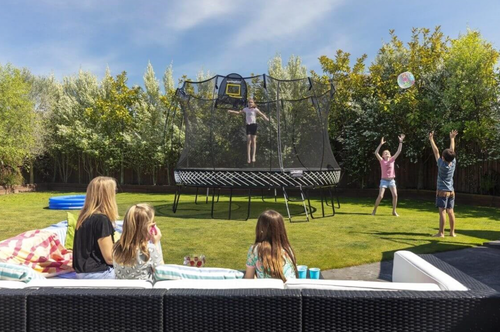
10 Safety Rules for Trampolines
Here are 10 rules to implement in your garden so you and your kids are as protected as possible from sustaining a trampoline injury:
One Jumper at a Time
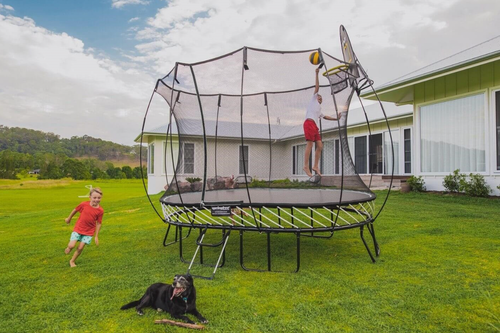
No Flipping
Avoid Roughhousing
No Pets
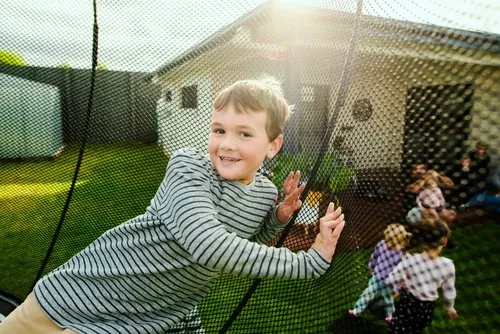
Clean Your Trampoline
Supervise When Necessary
Underneath the Trampoline Is Off Limits
Stay Centred
Enter and Exit Safely
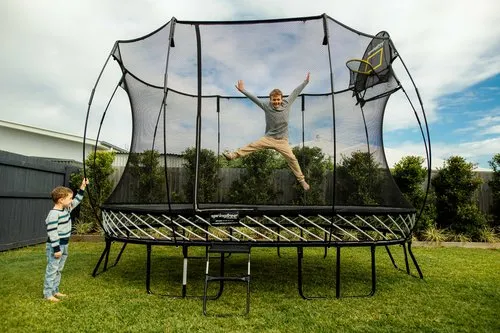
Set Expectations
Need a Safer Trampoline for Your Garden?
Trampolines can be dangerous: There’s no denying it. But as long as you follow the 10 safety rules discussed in this article, you will greatly mitigate the chances of suffering a trampoline injury and can rest easy knowing that your kids are safe while jumping.
There’s also one more major decision you can make to significantly decrease your chance of a trampoline injury: Buy a safer, high-quality, trampoline.
At Springfree Trampoline, we have crafted a springless trampoline that eliminates 90% of product-related injuries, with trampoline safety features such as:
- The use of flexible composite rods, or mat rods, instead of metal springs that can cause pinching injuries.
- A FlexiNet that cushions wayward jumpers and “flexes” to prevent falling injuries.
- A hidden frame that is positioned below the jumping surface, making it impossible to fall on while jumping.
- A SoftEdge Mat that is 30 times more shock absorbent than the safety pads on a spring trampoline and eliminates hard edges around the jumping surface—another common injury point on traditional trampolines.
- Pliable enclosure rods that replace the need for hard metal poles that can cause impact injuries to the jumper.
Springfree Trampolines are not a fit for everybody. They are premium trampolines and are priced as such (£1,095 - £1,695). If the cost is too much to bear, check out our “Best Trampolines for Kids” List to see some of the other notable trampolines at different price points!
However, if you don’t already have a trampoline or are looking to replace your current one, a Springfree Trampoline will be the safest trampoline you will find on the market and could be worth investigating further.
If you’re interested in a safer trampoline for your family, find out if you’re a fit for a Springfree by reading our article “Are Springfree Trampolines Worth the Money?”
